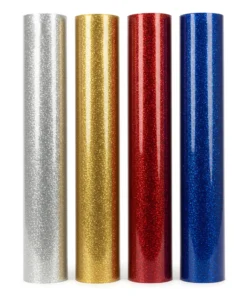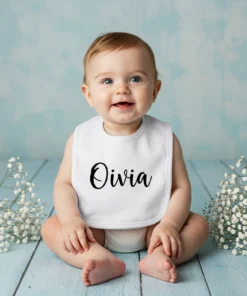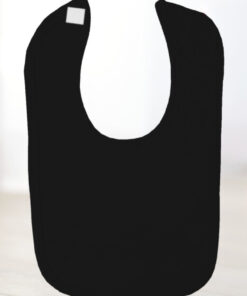Buy Continuation Sheets Online in UK – Business Stationery
From £36.80
Maintain a consistent and professional look throughout your business correspondence with Continuation Sheets from PrintVolt UK. Continuation sheets are the secondary pages that follow your main letterhead—perfect for multi-page documents such as reports, invoices, contracts, or detailed letters. They carry minimal branding (such as a footer or header) so your first-page letterhead remains your anchor while subsequent pages retain brand identity without repeating full design.
These sheets are fully customizable: choose paper stock, print style (single- or double-sided), size (typically A4 or custom), and finish to match your existing stationery items. For businesses that send multi-page documents regularly, continuation sheets are a cost-effective way to extend your stationery suite without full letterhead duplication.
PrintVolt UK offers flexible options with no minimum order quantity (No MOQ). Whether you need just a few sheets for occasional use or large volumes for continuous use, you can order what you need. Delivery options (Next-Day, 3-Day, etc.) make it easy to restock your stationery in time for your next mailing or meeting.
Ensure every page of your document preserves your brand’s look and feels unified. Order your Continuation Sheets from PrintVolt UK today and keep your business communications consistent, professional, and visually coherent.
1. What Are Continuation Sheets & Why They Matter
In business stationery, the first page of your communication usually features your letterhead with full contact information, logo, maybe watermark, company details, etc. But when your document goes multi-page, the subsequent pages don’t necessarily need all that heavy branding—it’s redundant and can be more expensive. That’s where continuation sheets come in: sheets that follow the first page, carrying minimal branding (usually header/footer), ensuring consistency without extra cost and complexity.
For business documents such as contracts, lengthy proposals, terms & conditions, or technical reports, using continuation sheets helps maintain professional design while keeping costs and print waste down.
2. Key Specifications & Customization Options
(You’d fill these based on your specific product. Here are typical options.)
| Feature | Typical Options / What to Specify |
| Paper Size | A4 (210×297 mm) standard; also may offer Letter, Custom sizes |
| Paper Weight / Stock | 80-100gsm bond or more premium 120-160gsm depending on stationery suite |
| Printing Sides | Single-sided printing usually; double-sided optional |
| Design Elements | Header (company name / small logo), footer, page number space, watermark possibility |
| Colour Options | Full-colour or spot colour for header/footer; black or corporate colours |
| Finish | Uncoated, matt, maybe gloss or laminated for premium feel |
| Quantity | Flexible – low or high depending on usage |
| Turnaround / Delivery Options | Standard, Express, etc. |
3. Matching Your Stationery Suite
An effective stationery set keeps all items—letterheads, envelopes, compliment slips, continuation sheets—aligned in design. This includes matching header/footer design, consistent fonts, colours, layout margins. Continuation sheets often are used as “filler” pages, so they must visually continue the style without being redundant. This improves brand coherence and looks polished with multi-page documents.
4. Use Cases & Benefits
- Reports & Proposals: For multi-page proposals you send to clients; only first page uses full header, rest use continuation sheets.
- Invoices / Statements: Statements often extend to more than one page. Use continuation sheets to not print full header each time.
- Contracts / Legal Documents: Helps maintain consistent branding across all pages.
- Manuals / Instructions: For internal or external manuals where you want your design identity throughout.
- Mailings & Transmittals: If you have packaging or mailers with inserts with multiple pages.
Benefits include reduced cost (less design/print space repeated), less waste, streamlined print jobs, improved consistency, and professional presentation.
5. How to Order & Best Practices
- Confirm your base letterhead design – so continuation sheets align with it.
- Decide what to include on continuation sheets – header, footer, maybe page number, minimal branding.
- Choose paper stock that complements your letterhead for a uniform feel.
- Select print options (single/double-sided).
- Upload artwork / logo / template – probably lighter than full letterhead.
- Review proof / mock-up – important to ensure header/footer alignment and margins.
- Order desired quantity – could be reams or smaller packs depending on demand.
- Delivery / turnaround – ensure delivery schedule fits your usage.
6. Design Guidelines & Tips
- Maintain the same margin widths as your letterhead.
- Keep header/footer subtle so subsequent pages aren’t visually overpowering.
- Use consistent fonts and logo treatment.
- Use high-resolution or vector graphics.
- Leave space for page numbers or other running text.
- Make sure colour choice works on both text and document background (if any).
7. Cost & Economies
Using continuation sheets can save money when printing multi-page documents long-term, because full letterheads are not required for every sheet. Also paper weight and stock influence cost significantly — matching your regular stationery helps avoid mismatched visual or feel costs.
Bulk printing may reduce per-sheet costs, but flexible options help avoid overstock if your need is occasional.
8. Considerations & When Continuation Sheets Might Not Work
- If every page needs full letterhead (for legal or branding rules), continuation sheets won’t be enough.
- If your documents include parts where branding or contact info on every page is required (regulations etc.), you’ll need design for each page.
- Colour matching across different stocks can drift; need to ensure consistency.
- For double-sided or heavy volumes, paper thickness and finish matter to prevent show-through or bleed.
9. Call to Action
Ensure every page of your multi-page documents carries your brand identity cleanly and cost-effectively. Order Continuation Sheets Business Stationery from PrintVolt UK now. Choose your stock, print options, upload your design, approve the proof, and get professional continuation sheets that keep your business stationery looking cohesive and polished.
FAQ
Q1: What is a continuation sheet?
A continuation sheet is a secondary sheet used in multi-page documents that follows the initial letterhead page. It retains minimal branding elements (header, footer, etc.) so all pages appear tied together without repeating the full letterhead.
Q2: Can I print on both sides?
Usually yes — depending on your needs and printer capabilities. Single-sided is standard, double-sided may be more cost-efficient for longer documents.
Q3: What paper stock should I choose?
Match or closely match your letterhead stock. Common options include 80-100gsm bond for standard use; heavier stock if you want premium feel or need durability.
Q4: Is there a minimum order quantity?
It depends on the provider. At PrintVolt UK, if this product follows their typical model, it’s likely no minimum order quantity (No MOQ)—you can order small or large amounts.
Q5: How quickly can I receive them?
Delivery times depend on selected options. If PrintVolt offers it, options like Next-Day, 3-Day, or even same-day dispatch (if ordered within deadline) may be available.
Q6: Should I include logos or full contact info on continuation sheets?
Not usually — header and footer should carry branding, but the rest of the body is dedicated to content. Overloading with branding can be distracting or redundant.
Q7: How do I ensure alignment with my letterhead?
You should use the same design theme, colours, fonts, margin widths. When ordering, provide your letterhead file as reference so continuation sheets are designed to match.
Q8: Are continuation sheets a cost-saving measure?
Yes — especially when used frequently. Because you’re not repeating full letterhead design on every page, print space and design are reduced, leading to lower cost per sheet.
Q9: Can I overprint continuation sheets using my office printer?
Often yes — many companies get blank header/footer continuation sheets printed and then load them into their office printers to print content. Make sure the blank continuation sheet stock is compatible with your printer.
Q10: What happens if my design includes watermarks or background images?
These can complicate printing and cost; design needs to ensure watermark doesn’t interfere with readability. Also, paper stock and print method need to support subtle background images without bleeding or show-through.
Be the first to review “Buy Continuation Sheets Online in UK – Business Stationery” Cancel reply
Related products
Uncategorized
Sports Polo Shirt
Uncategorized
Packaging
A5 Flyers & Leaflets














Reviews
There are no reviews yet.